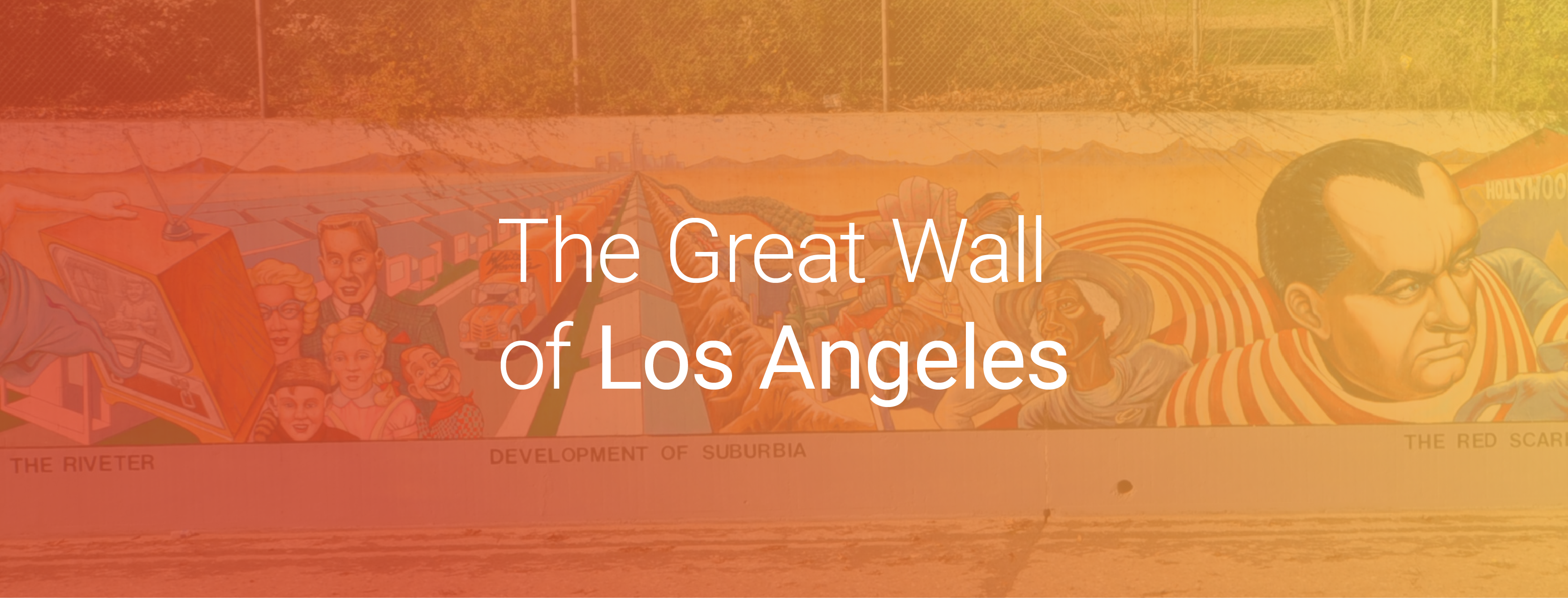
-
Category:
- #OurLA
- Communities
#OurLA
At a time when Angelenos are significantly confined to our homes, LA City Planning’s Office of Historic Resources has created a series of blogs called #OurLA to keep us connected to one another and to the places and neighborhoods that make Los Angeles special. This series highlights lesser-known historic buildings and historic places across the city – including places that help build community and connection. We’ll also be offering links to where you can learn more about related historic places and themes that have helped to define Los Angeles.
While China may have its more famous Great Wall, the San Fernando Valley’s Great Wall of Los Angeles reflected similarly grandiose ambitions. As one of the largest murals in the world, stretching 2,754 feet, or over half a mile, it represents a sweeping people’s history of California, all within a single artwork.
The Great Wall of Los Angeles is located along the west wall of the Tujunga Wash flood control channel near Coldwater Canyon Blvd. between Oxnard St. and Burbank Blvd. in the Valley Glen community (formerly North Hollywood).
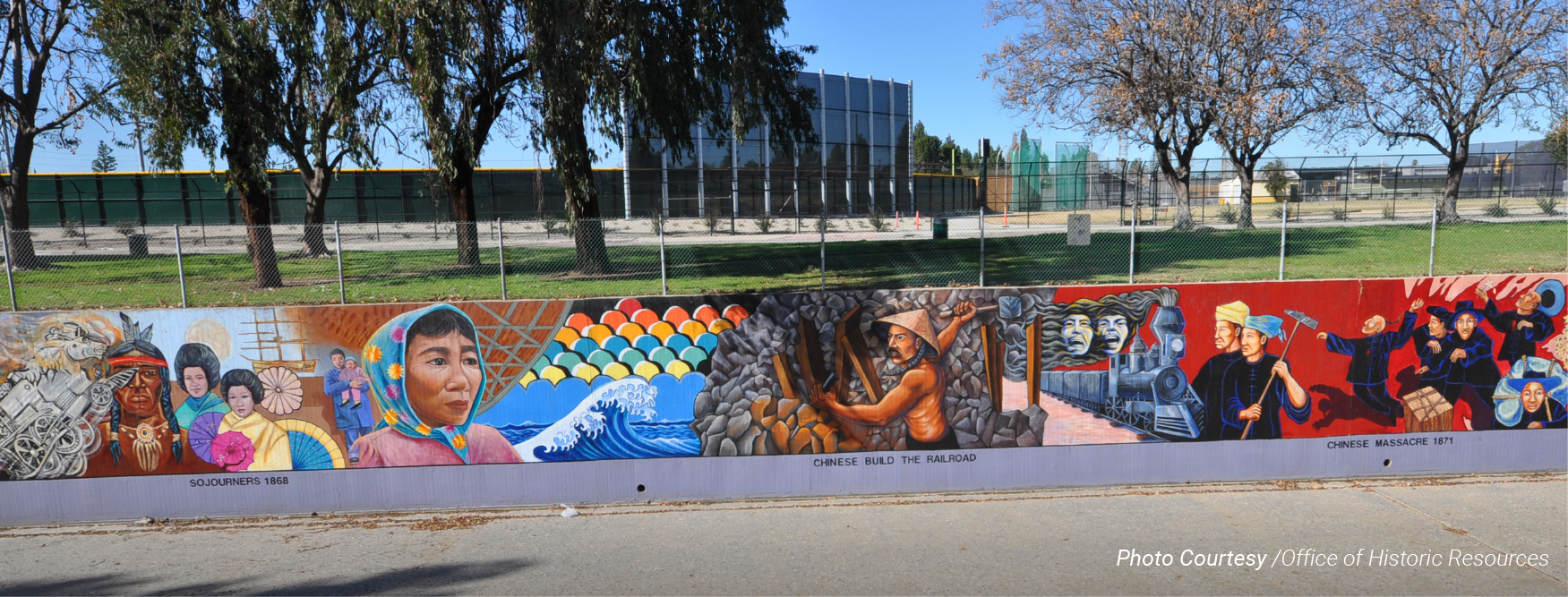
In 1974, the Army Corps of Engineers, which controlled the Tujunga Wash channel, commissioned artist Judy Baca to transform the wash with a mural. Baca joined forces with artist Christina Schlesinger and filmmaker Donna Deitch to create the Social and Public Art Resource Center (SPARC) in 1976, locating the new organization in the former Venice city jail. SPARC’s work on the Great Wall was part of its larger Citywide Mural Project, which ultimately produced 250 murals across Los Angeles through one of the first multiethnic and interethnic community building programs in the city.
Each section of The Great Wall took a full year to research and execute, with designs that were developed and reviewed using a “talk through” process, involving poets, writers, musicians, and community members, all providing multiple perspectives or “prisms.”
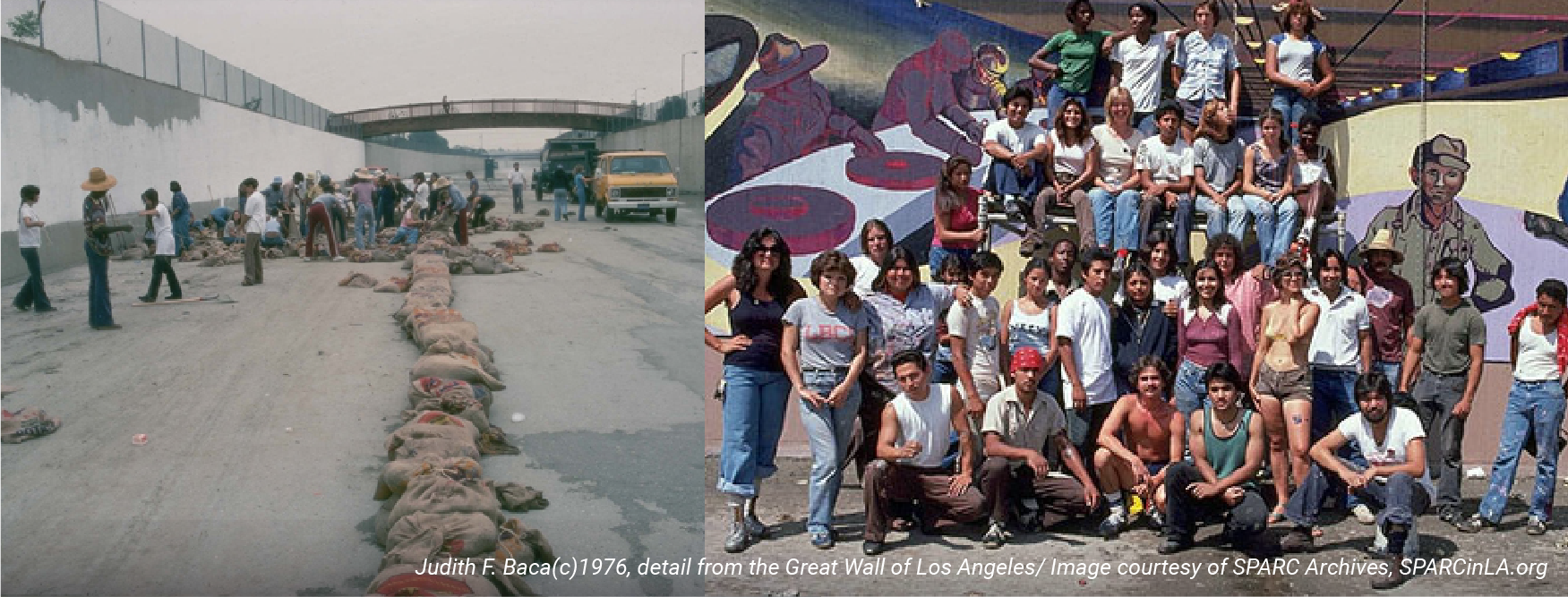
The first 1,000 feet of the mural (35 segments) were completed in nine weeks during the summer of 1976 by a team of at-risk youth between 14 and 21 years old. Between 1978 and 1983, the depiction of four additional decades were added to the mural, with a new decade added to the mural each summer: the 1920s in 1978; 1930s in 1980; 1940s in 1981; and 1950s in 1983. By the conclusion of the project in 1984, 35 artists and 400 young mural makers (mostly Chicano/a and African American) had participated in the process.
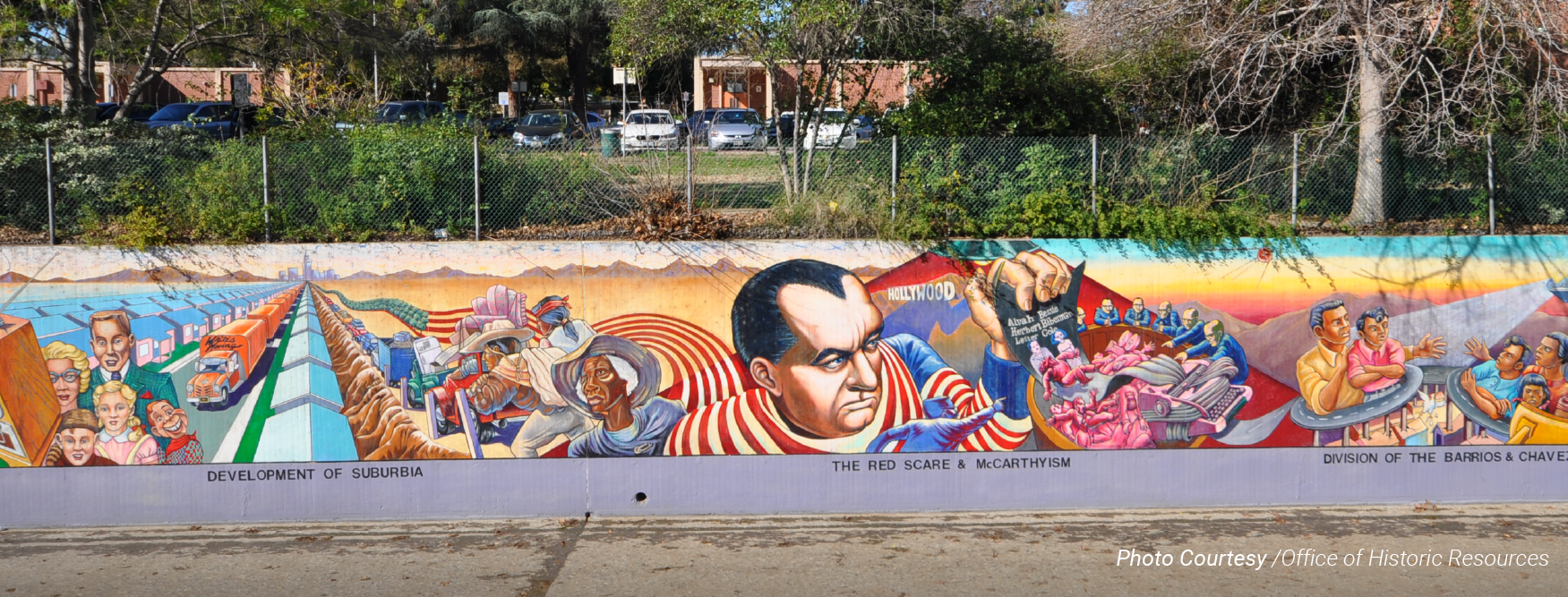
The mural is arranged in six sections with 86 titled chronological segments depicting eras of California’s history from prehistoric times through the 1960s. Sections are usually organized by decade, depicting discrete historical events or important figures from the specified time period.
The wall represented a significant departure from most monumental artworks of previous generations, which had traditionally emphasized the stories of Caucasian males, offering a counter-narrative focusing on marginalized and indigenous communities that was ground-breaking in the 1970s. The mural’s scenes emphasize the role played by Native Americans, Latino/as, African Americans, Asian Americans, and Jewish Americans in creating California’s culture. The Great Wall’s imagery highlights themes such as immigration, exploitation of people and land, women’s rights, racism and racial justice, and the struggle for LGBTQ rights.
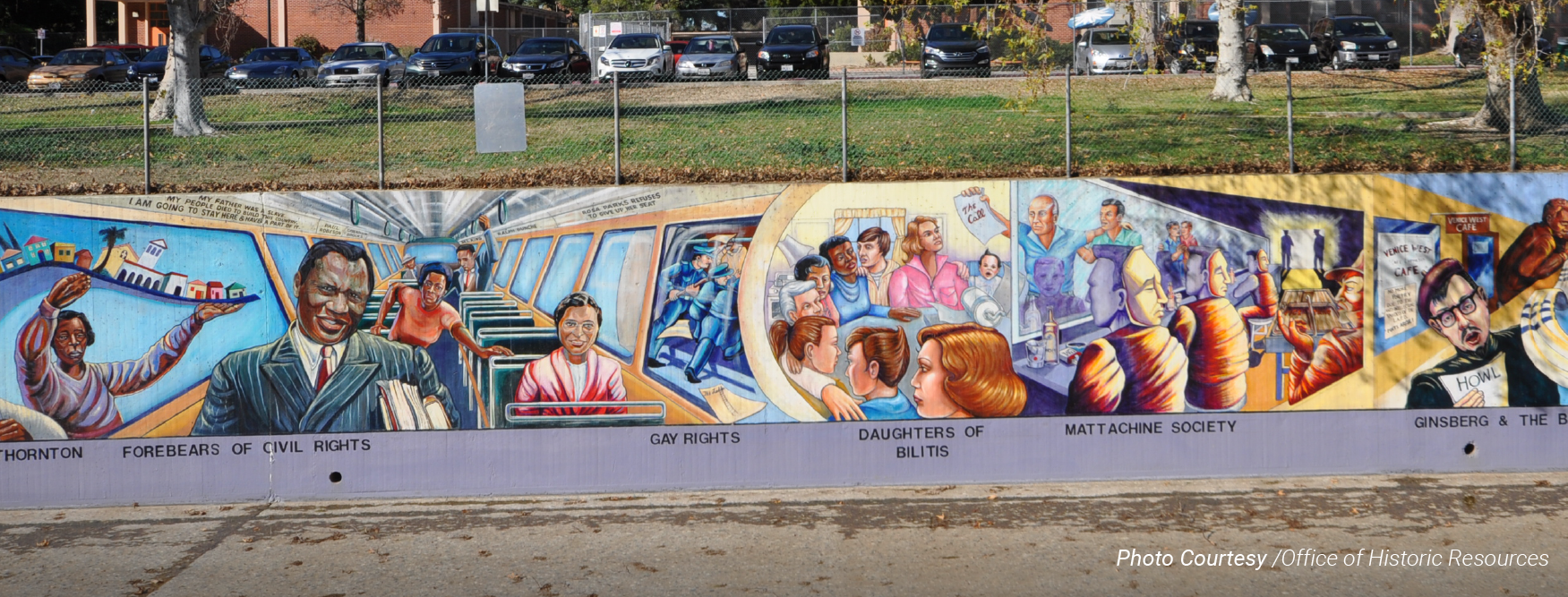
The artistic style of the mural is rooted in the traditions of the 1930s Mexican muralists as well as the Works Progress Administration (WPA) murals of the New Deal era. It reflected the burgeoning Chicano/a mural movement of the 1970s, using bold colors, steep perspective lines, and symbols influenced by indigenous Mesoamerican art.
L.A. City Planning’s Office of Historic Resources (OHR) has championed the official historic designation of this important San Fernando Valley cultural landmark, and in 2017 successfully nominated the Great Wall of Los Angeles for listing in the National Register of Historic Places. This nomination was part of the OHR’s work to prepare a citywide preservation framework (Historic Context Statement) for places associated with Latinx history in Los Angeles.
For a deeper dive at home:
For a video tour of the length of the Great Wall of Los Angeles, see www.youtube.com/watch?v=EtAEDVe7X6Y. For other videos and links related to the Great Wall’s history and future, see SPARC’s website at gwdvd.sparcinla.org/.
To learn more about how murals, public art, and other visual arts helped shape Los Angeles and the city’s Latinx communities, see the Latino Los Angeles Historic Context Statement, prepared in 2015, at planning.lacity.gov/preservation-design/historic-resources/ethnic-cultural-contexts
Search for other historic resources associated with Latinx culture and the City’s overall cultural history, using the City’s comprehensive inventory of historic resources, HistoricPlacesLA.
Also excellent photos on the making of the Great Wall at
http://www.judybaca.com/artist/the-great-wall-history-and-description/.